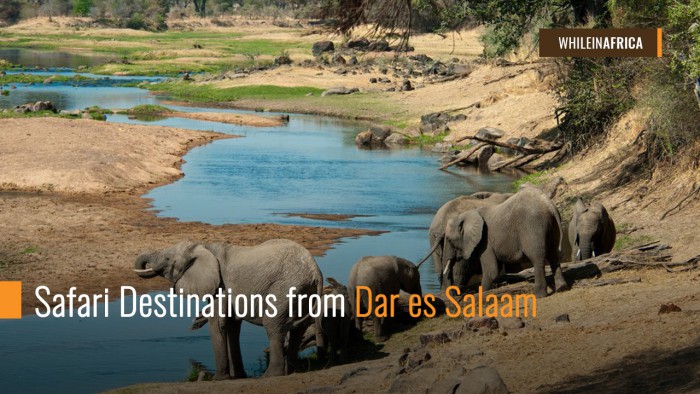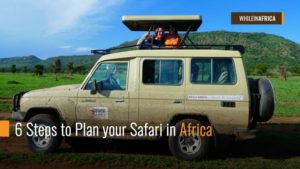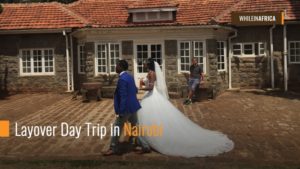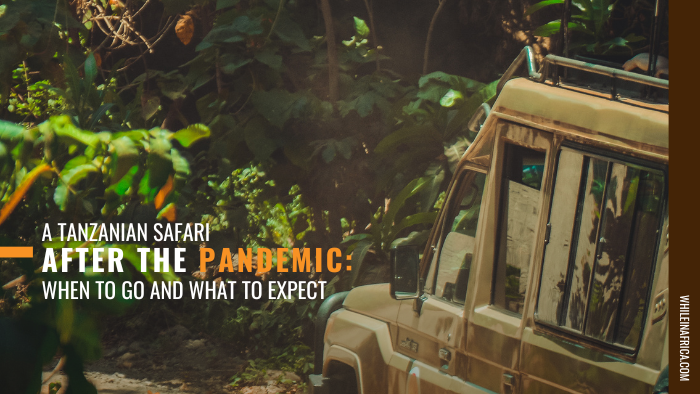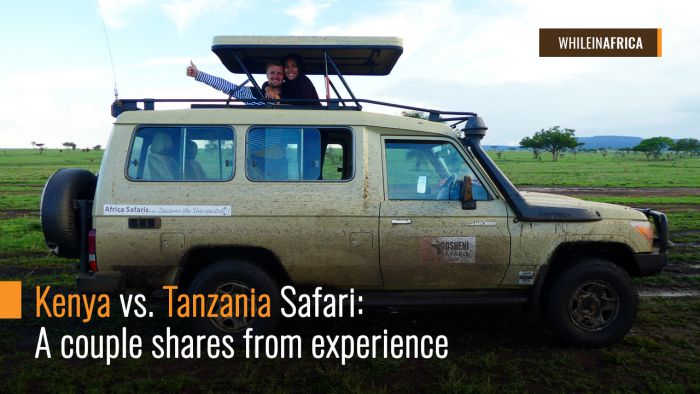Dar es Salaam was Tanzania’s first capital city until Dodoma was declared as the capital in 1974. However, Dar es Salaam remains the central administrative and most prominent city in Tanzania and holds one of the most accessible international airports in the country. Safaris from this city are usually not every traveler’s top choice to start their African adventure. Contrary to the more well-known safari circuits in the north, safari parks near Dar are more uncontested, remote and relatively cheaper. If your travel plans limit you to go further and you still want to go on a safari, visiting parks near the capital is not the worst decision.
Ways to get here
There are direct and one-stop flights from overseas to Dar es Salaam. Its main airport and the international gateway is the Julius Nyerere International Airport (DAR), located about 10km west of the city center. DAR airport is also the entry hub for those who are visiting the southern safari circuit parks of Tanzania such as Selous Game Reserve and Ruaha National Park.
Dar es Salaam is served internationally by many various airline providers. From the UK, travelers can depart from Heathrow or Gatwick and spend about 11 to 17 hours on the plane to Dar. You can also fly from Amsterdam via KLM Royal Dutch Airlines as they offer daily flights via Kilimanjaro, or from Zurich as 5 flights a week to Dar through Nairobi are available via airlines like Swiss International Airlines.
From Asia and the Middle East, the easiest way to get to Dar would be flying from either country: Istanbul, Dubai, Doha, Muscat, and Cairo. From the United States, you have two options: get a flight that goes to Dar es Salaam via Amsterdam and/or Nairobi OR fly to any other hubs like UK, Amsterdam or Istanbul and takes another flight to Dar es Salaam from there. Most American travelers take the latter option as it is usually much cheaper. Moving on from Dar-es-Salaam, you can fly or drive between parks and reserves or you can opt to do a bit of both.
Climate
Dar es Salaam has a tropical wet and dry climate. The amount of sunshine is generally good throughout the year except April, the wettest month with about 255mm precipitation. Although its climate is classified into two: wet and dry, the wet season is subdivided into “short rains” and “long rains.” Short rains fall between October and December. Rains during these months don’t usually last the whole day nor occur every day. On “long rains” which happen around March to May, heavier showers can be experienced starting early in the morning and can last up until the afternoon or evening. It is also more humid during this time.
Visa
Travelers to Tanzania need visas to enter unless they are citizens of these countries. Visas can be obtained at any Diplomatic or Consulate Mission of the United Republic of Tanzania abroad, normally within one business day. However, citizens of most countries including the United Kingdom, Canada, Nigeria, India, and the United States have the option to obtain a Visa on Arrival (single entry) for a fee of $50 ($100 for US citizens) to be paid in cash and US dollars.
Best time to go
The most ideal months to visit Dar for wildlife viewing are June to October during the dry season. These are also the coolest and less humid months.
Safaris from DAR
As previously mentioned, safaris from Dar are cheaper, remote and far less crowded compared to the widely popular northern safari circuits. Yes, the number of accommodation options is limited. But this could also be an advantage since it guarantees a more exclusive safari experience.
Traveling with kids?
For families traveling with kids, most lodges and activities in the parks restrict children below the age of 12 or sometimes 6. Travel-wise, short flights will be convenient for the kids. Long drives, on the other hand, may make them throw more tantrums than usual. This also applies to seniors. Although the northern circuits are more kid-friendly than the safaris near Dar, you can always inquire about a reputed tour operator. Maybe they can arrange something for your kids while the adults go on a game drive.
North vs South Circuit Safaris
Games in these parks, albeit abundant, are also a little skittish compared to the north because of big game hunting in the past. But looking at the bright side, you get to experience the thrill of chasing and looking for wildlife. Some activities like bushwalk and boating are also offered in some of these parks and are not at all available in the north. Also, since the coast is close to Dar, travelers can easily add a beach trip to their itinerary.
Here are the top 5 safari destinations near Dar, somewhat ranked based on factors like accessibility from Dar, availability of accommodation and the quantity and quality of the game.
Mikumi National Park
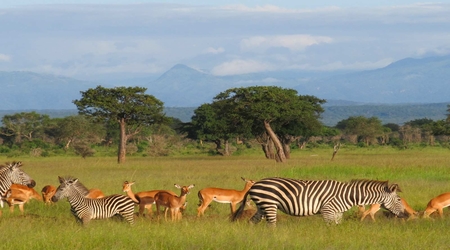
A small oasis near Dar es Salaam, Mikumi National Park presents an incredible game density. It covers 3,230 square kilometers of flood plains, rolling hills and woodlands teeming with zebras, wildebeests, elephants, antelopes, kudus, lions and over 300 bird species. There are several observation towers around the park to allow visitors to view its stunning entirety.
Recommendation: Whether you’re in for a day trip or you want to stay longer, Mikumi National Park is an excellent choice. Since it is very close to DAR, most travelers who only have a day or two to spare in the city opts to explore this park for a day tour.
How to get there: Mikumi National Park is also the closest park to Tanzania’s capital, Dar es Salaam, which is just about 4 to 6 hours away via road. To get to this park via plane, the only scheduled flights are with Safari Air Link, which also offers a daily connection to Ruaha, Selous and Dar es Salaam.
Selous Game Reserve
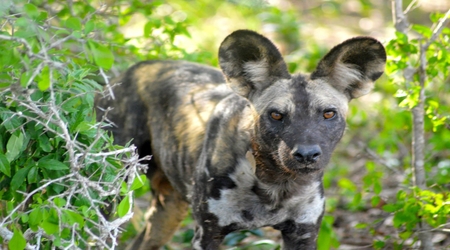
Selous Game Reserve is famous for being the oldest reserve in Africa and the largest faunal reserve in the world. It is a UNESCO world heritage site that is only an hour’s flight away from Dar es Salaam. Wildlife in this reserve is wildly extensive with over 100,000 wildebeests, 35,000 zebras, 25,000 impalas and tremendous herds of giraffes, kudus, and antelopes. It is also very famous for its lion pride and endangered wild dogs. One thing that tourists love about Selous is its proximity to Zanzibar.
Recommendation: If you wish to go to the beach for a much needed R&R after a few days in the wild, Selous is perfect because it is only an hour’s flight away from Zanzibar or other Dar es Salaam beaches.
How to get there: There are 3 ways to go to Selous. The first is to take the road and go through Morogoro town. This trip usually takes about 6 to 10 hours from Dar. Most tourists also visit Mikumi and then go through Morogoro and then Selous. Another way is to take the TAZARA (Tanzania Zambia Railway) railroad system. Travel time is about 4 to 5 hours and the view is guaranteed to be majestic. The last option (and the most expensive one at that) is to fly to an airstrip in the park. The trip only takes about one hour from Dar and flights are available daily from Dar, Zanzibar, and Arusha.
Ruaha National Park
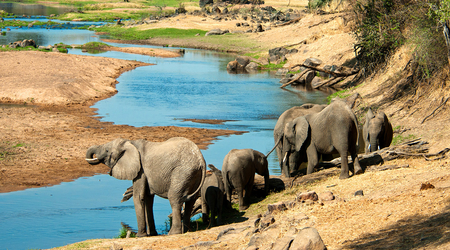
As one of the most remote and unrefined parks in Africa, Ruaha National Park maintains a vast pristine wilderness area. It is Tanzania’s second-largest park that is widely famous for its significant populations of elephants and buffaloes and some packs of endangered African wild dogs. Ruaha will also not disappoint twitchers as it holds over 400 species of birds.
How to get there: Taking the road from Dar, it will take about 10 hours to travel to Ruaha National Park. 8 hours of which is traveling to Iringa and then and additional 2 hours to Ruaha. Roads are well maintained but night drives are not permitted. If you want to travel by air, you can either fly into the Msembe airstrip or Jongomero airstrip from Dar. Travel time is about 2.5 hours. The only one that offers scheduled flights to this park is Safari Air Link.
Saadani National Park
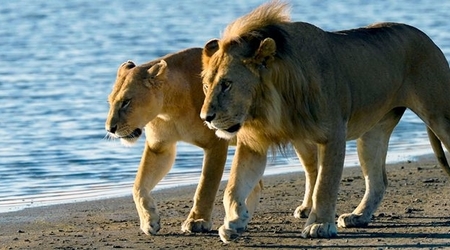
Saadani National Park is not as popular as Selous, Ruaha or other Tanzanian parks but it offers an equally beautiful landscape, a unique ecosystem and diverse wildlife, which sits just approximately 200 kilometres northwest of Dar es Salaam. It is home to a thriving population of giraffes, buffalos, wildebeests, waterbucks, and warthogs. Elephants, lions, leopards, storks, futures, lilac-breasted rollers, ground hornbills and fish eagles are some of the most common animals you can spot around the park. Many different exciting activities including game drives, walking tours, and boating safaris can also be experienced here. Saadani National Park is perfect for both budget and luxury travelers.
How to get there: Scheduled flights from Dar es Salaam as well as Zanzibar are available. For those who prefer land and boat transfers, Saadani lodge operators can arrange this as per request.
Udzungwa Mountains National Park
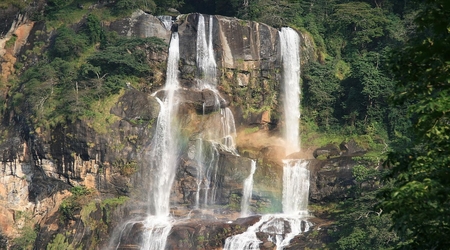
The highlight of this park is its biodiversity – tropical rainforests, woodlands, grasslands, mountain forests and steppes all in one breathtaking place. It covers only 2% of Tanzania but houses about 30-40% of the country’s mammal and plant species. Mammals that are commonly found in this park are elephants, palm civets, leopards, and hyenas. Also, approximately 400 bird species, 10 species of primates (2 of them unique to this region) and Tanzania’s most extensive mountain inhabit the park.
Recommendation: Because it is only 90 minutes drive away from Mikumi, most tour operators recommend either a day trip to this park or a short stay in one of their camps.
How to get there: From Dar es Salaam, take the Morogoro road and continue to Mikumi and then to Udzungwa. In total, this will take around 6 hours on the road. For travelers who prefer to take public transport, you can catch a train. That only costs about $5 for a second-class seater.
Suggested Itineraries
If you only have a day to spare in Dar, travel specialists highly recommend a day tour to Mikumi National Park. You can leave Dar at around 5 AM and make a quick breakfast stop at Chalinze on the way. Travel from Dar to Mikumi takes about 4 to 6 hours on the road. This can either be arranged with a safari operator or you can rent a vehicle and drive on your own. You will arrive at Mikumi National Park before lunch so you can go on a short game drive before taking a lunch break.
In the afternoon, you can spend the entire time for game drives around the park. Then, as you please, leave around 4 PM to travel back to Dar. This is usually how any other safari tour operator’s day tour itinerary goes. Usually, the cost is around $250 to $400 per person. You can also extend this tour to a 2-day or a 3-day trip. This way, you can spend the nights in one of the park’s lodges.
Sample day-to-day
For a 5-day itinerary, you can visit Selous, Mikumi, and Udzungwa. You can also add a side trip to Sanje waterfalls for about $180 to $350 per person per day.
Day 1: Travel to Selous Game Reserve from Dar es Salaam
Day 2: Spend the entire day at Selous Game Reserve
Day 3: Travel to Mikumi National Park after breakfast and stay overnight in the park
Day 4: After lunch, drive to the Udzungwa Mountains National Park and spend the night there
Day 5: Trek to Sanje waterfalls after breakfast and then head back to Dar es Salaam
Another common option for a 5-day itinerary is a trip to Mikumi National Park and Ruaha National Park. Compared to other parks near Dar, a lot of people find Ruaha National Park to be quite expensive. But, you can spend half a day in Ruaha or stay overnight and still not burn a hole in your pocket. Travel time to Ruaha from Mikumi and vice versa takes at least 6 hours on the road.
Of course, you can always mix things up and go to particular parks that tickle your fancy. You can even go from Dar Es Salaam to Zanzibar for a beach trip on the last day. Whatever your preferences are, you can easily contact a safari tour operator and have them tailor-make your itinerary.

